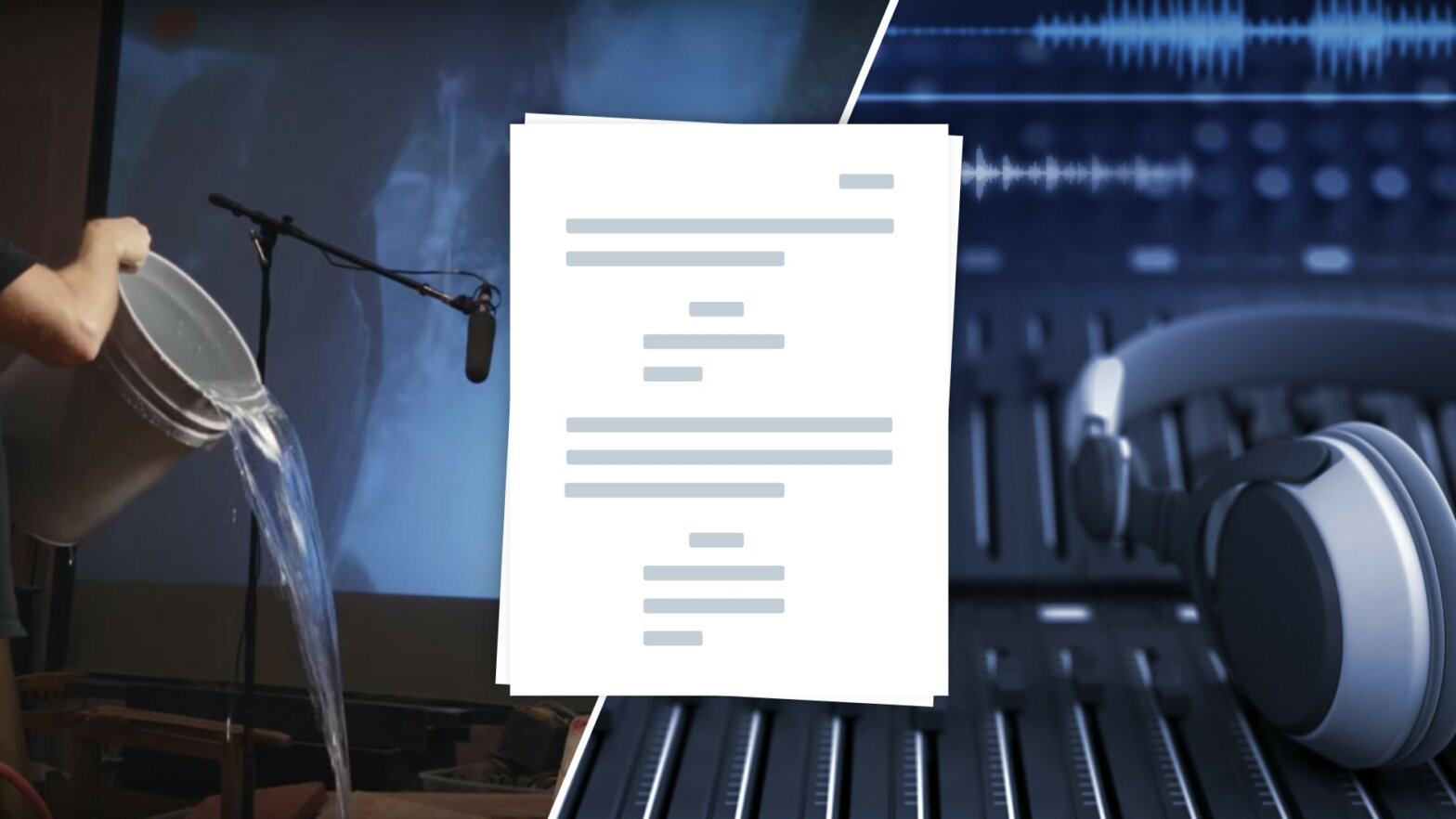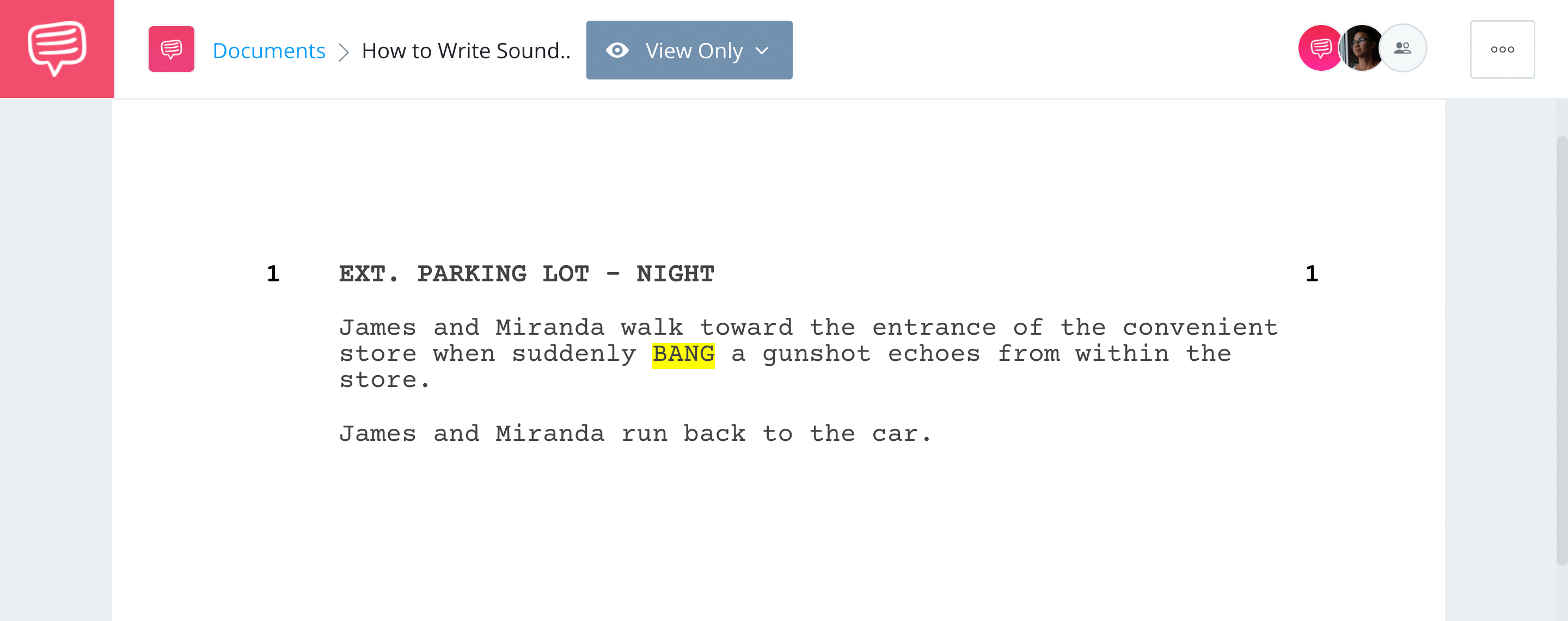Sound design is a key element of filmmaking that gives the world of a story more depth. This can be ambient sound from cars passing by or even birds chirping overhead. But what about sounds that literally move a film’s plot along? Filmmakers have used sound effects across all genres to motivate characters’ actions, create suspense, or trigger a sequence of events.
Before making it to the big screen, these important sound effects are written into screenplays as storytelling devices. So how to write sound effects in a script correctly? The answer is much simpler than one might think.
How To Write Sound Effects in a Script
How to write SFX in script
When learning how to write sounds in text it is important to first note if the sound is important to the plot. If the sound is important to the scene, such as the sound of a gun shot that causes characters to run, then it is typically written in an action line in all capitalized letters.
When using the StudioBinder screenwriting app, select the “Action” icon in the top toolbar. Write out the action and when the story comes to the sound effect, write the sound effect in all capitalized letters. Because these sound effects fall under the category of diegetic sound, they should be written as onomatopoeia rather than the description of the sound effect itself. For example, rather than writing sounds like “gunshot” write “bang”.
How to write sound effects in a script • Read Example
Also note that any SFX in screenplay that has to do with a characters’ dialogue and performance should not be written in the screenplay as a sound effect. For example, if a character is yelling, you do not need to write
James YELLS at Miranda from the parking lot.
Rather, write the dialogue blocks as normal with exclamation points and allow the actors to interpret the line of dialogue to perform it how they or the director sees fit.
It’s important to remember that sound effects that are important to the script, such as plot points or setting elements, should be formatted this way. Learning how to write sound effects in a script is a necessary tool for any working or aspiring screenwriter. Check out our video in which we break down how to format sound effects and other key elements of a screenplay.
How to write sound effects in a script • Subscribe on YouTube
Sound effects are one of the unique aspects of screenwriting that give the written page a more cinematic experience. Whenever a sound effect is used in your screenplay that affects the plot, be sure to format in this way to draw the reader’s attention to the sound just as it would in the theatre.
UP NEXT
How to Write a Montage in a Script
Screenwriters are tasked with the unique challenge of writing a cinematic story on paper. Sound effects are among the many tools screenwriters have to do this. Another one of these tools is the montage. Whether you know your script will contain a montage or not, knowing how to format one will make you a more prepared and better equipped screenwriter. Learn how to write a montage in screenplay format now.

